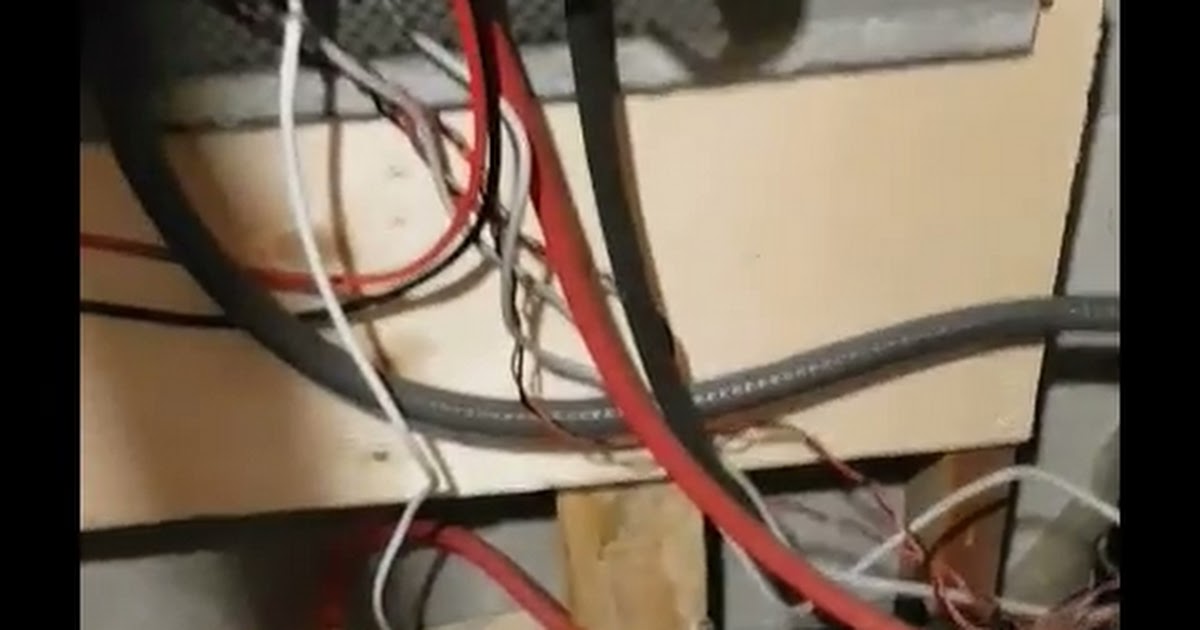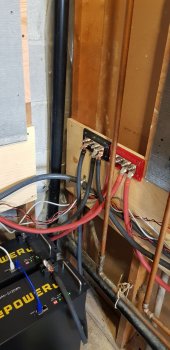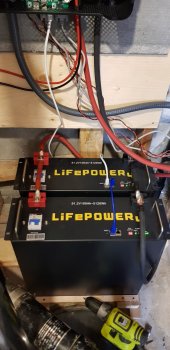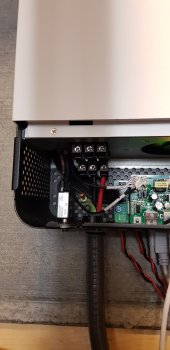Last year i ordered 2 Growatt 5kW Stackable Off-Grid Inverters | SPF 5000 ES-US plus two EG4-LifePower4 Lithium Batteries | 48V 100AH from Signature Solar.
I contacted them but still no answer so thought you guys might have an answer.
I just finished setting everything up. And everything is working correctly except that I have current on the inverter casing and everything metal that is connected to the casing. You will get a lite shock if you touch any of it. The wires, the screws on the sides and bottom, the communication cables etc.
This is when the solar, batteries and inverters are on.
The issue happens only if I turn on the solar on the inverter. If I just have the batteries connected and inverters on then I don't have the issue.
I also noticed that if the batteries and inverters are on and I don't connect the PV wires that there is current on the PV input.
This happens on both inverters.. so it seems like there is something wrong with the inverters. But also unlikely that both are defect.
I checked all wiring and I am 100% sure I connected everything correctly.
Any idea what the issue can be? Could it be that both inverters are defect?
I created a video to walk you trough my setup. I also added additional photo's.

 drive.google.com
drive.google.com
I contacted them but still no answer so thought you guys might have an answer.
I just finished setting everything up. And everything is working correctly except that I have current on the inverter casing and everything metal that is connected to the casing. You will get a lite shock if you touch any of it. The wires, the screws on the sides and bottom, the communication cables etc.
This is when the solar, batteries and inverters are on.
The issue happens only if I turn on the solar on the inverter. If I just have the batteries connected and inverters on then I don't have the issue.
I also noticed that if the batteries and inverters are on and I don't connect the PV wires that there is current on the PV input.
This happens on both inverters.. so it seems like there is something wrong with the inverters. But also unlikely that both are defect.
I checked all wiring and I am 100% sure I connected everything correctly.
Any idea what the issue can be? Could it be that both inverters are defect?
I created a video to walk you trough my setup. I also added additional photo's.
20220726_154049_1.mp4
 drive.google.com
drive.google.com
Attachments
-
 20220726_154652.jpg107.6 KB · Views: 17
20220726_154652.jpg107.6 KB · Views: 17 -
 20220726_154650.jpg106.3 KB · Views: 16
20220726_154650.jpg106.3 KB · Views: 16 -
 20220726_154644.jpg87 KB · Views: 18
20220726_154644.jpg87 KB · Views: 18 -
 20220726_154638.jpg105.9 KB · Views: 18
20220726_154638.jpg105.9 KB · Views: 18 -
 20220726_154628.jpg115.8 KB · Views: 18
20220726_154628.jpg115.8 KB · Views: 18 -
 20220726_154625.jpg111.3 KB · Views: 17
20220726_154625.jpg111.3 KB · Views: 17 -
 20220726_154620.jpg92.9 KB · Views: 18
20220726_154620.jpg92.9 KB · Views: 18 -
 20220726_154614.jpg81.8 KB · Views: 18
20220726_154614.jpg81.8 KB · Views: 18 -
 20220726_154548.jpg70 KB · Views: 17
20220726_154548.jpg70 KB · Views: 17



